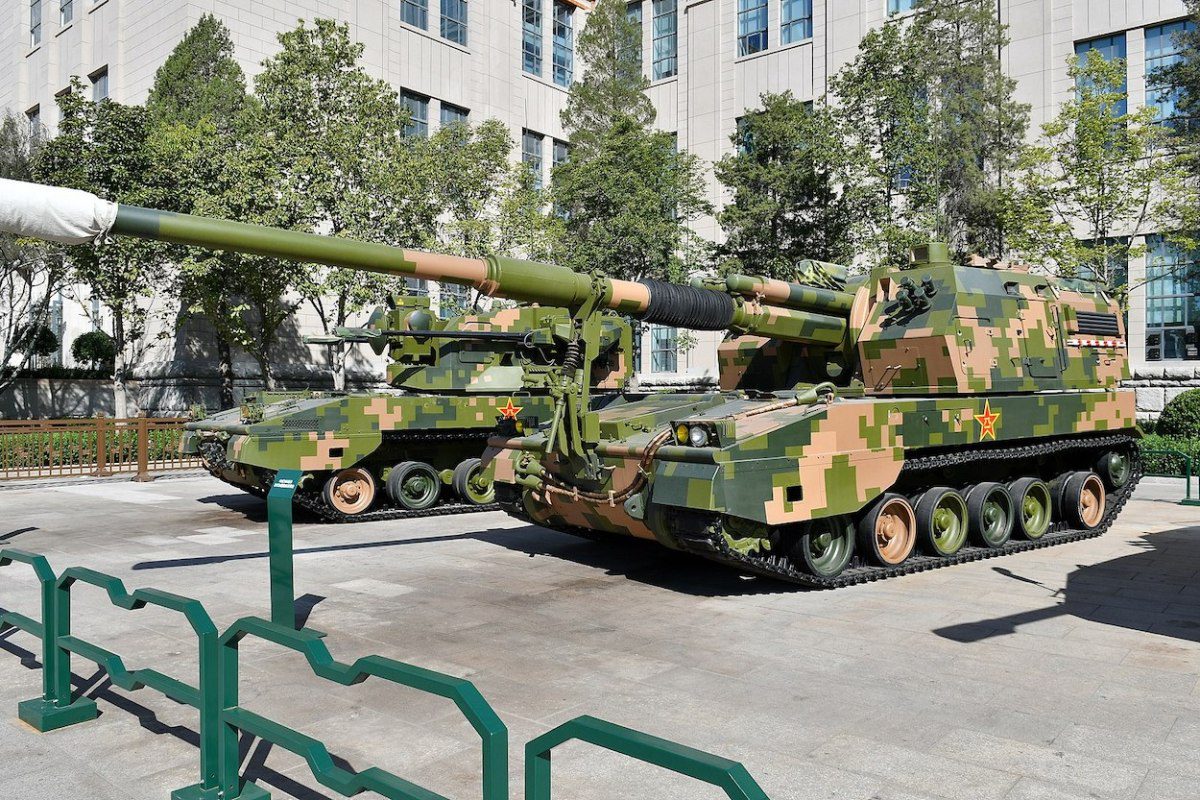Global Courant 2023-04-20 10:15:07
By taking notes on the artillery practices of both sides in the war in Ukraine, China can now use artificial intelligence (AI) to train its big guns against Taiwan.
This month the South China Morning Post reported that a Beijing-based scientific team had conducted multiple tests of AI-powered laser-guided artillery rounds capable of hitting human-sized targets 10 miles away, noting that the precision achieved during the tests exceeded expectations, with shots of center hits on bullseye -goals .
The SCMP said existing guided artillery rounds have limited accuracy due to the huge amount of real-time data that must be calculated using traditional mathematical models. It also said much of this valuable raw data is lost because microchips in guided artillery rounds need to be as simple as possible to withstand the tremendous shock and heat of being fired from a cannon.
However, the SCMP notes that AI has the potential for faster data processing speeds compared to traditional mathematical models and can evade demanding trajectory calculations using data collected from tests or real shooting situations.
It also says that the science team has used different AI models for various tasks related to advanced trajectory adjustments in flight, improving accuracy through task balancing. The source also noted that with AI, even slow microchips in guided artillery rounds can perform all the necessary calculations using all available data.
In a scenario in Taiwan, the SCMP notes that AI-powered guided artillery can take out targets in urban areas more efficiently than traditional firepower and at a lower cost than missiles. It also says such precision would prevent collateral damage and civilian casualties and make reconstruction easier.
With those developments, China may be trying to avoid Russia’s artillery failures in Ukraine during a potential contingency in Taiwan.
Learning from Russian mistakes
In a Forbes article from December last yearDavid Ax notes that on paper Russia possesses one of the world’s best artillery fire control systems, but in practice poorly trained gunners who follow rigid and outdated doctrines squander Russia’s artillery advantage by firing many rounds without hitting anything, or even resulting in friendly fire incidents.
Ax notes that all reported contacts are treated as true in Russian artillery. All fire missions are executed in the order they are received, unless higher authorities direct other missions to be prioritised. He says this shows that Russian troops leading fire missions either have no access to contextual information or are completely indifferent to it.
In contrast, Ax says the Ukrainian military uses the North Atlantic Treaty Organization’s “mission command” concept, which involves pursuing strategic objectives set by higher levels of command while giving lower levels of command tactical autonomy.
In practice, Ax notes that Ukrainian artillery fires, adjusts the aim and completely changes the fire plans if they don’t work, unlike Russian artillery that keeps firing pending higher orders.
China is learning from Russia’s experience and is integrating precision-capable artillery to achieve maximum effect while firing as few shots as possible.
Importance of precision
PR Shankar notes in a November 2021 article for MyIndMakers that China views offensive firepower, such as artillery, as key to achieving military deterrence, crisis escalation through punitive strikes, paralysis and degradation of the enemy’s systems, and undermining the enemy’s morale.
In this regard, Shankar also emphasizes that China is repeatedly and increasingly emphasizing the importance of precision strikes according to the adage “the precise controls the imprecise”.
He says China will use surgical precision weapons to manage the uncertainty of the battlefield while increasing the same for the opponent, with precision fire strikes disrupting the enemy’s operational pace.
The intelligence agency of the United States Defense Intelligence Agency China Military Power 2019 Report says that artillery is the critical component of the People’s Liberation Army-Ground Force (PLA-GF) strike capability, its primary mission being to support ground attack missions.
The report says artillery makes up a third of the PLA-GF’s operational unit strength, with modern artillery systems capable of long-range deployments, firepower operations and mobile warfare.
According to the report, China continues to acquire modern artillery systems to support the mechanization of PLA-GF artillery while integrating information systems to increase lethality and precision.
China could use precision fire coordinated with robust command and control to achieve strategic effects, such as decapitating Taiwan’s command and control rather than mass fire aimed at its forces.
American reliance on air power
The US may have to catch up due to decades of underinvestment in artillery. notes Michael Peck in a January 2022 article in Sandboxx that since the end of World War II, air power has supplanted artillery as the American go-to for heavy firepower.
Peck says artillery lost favor because it was too cumbersome to deploy in deserts, jungles and mountains, but planes had the speed and flexibility to drop heavy munitions.
Peck said the US saw air power as a means of avoiding bloody ground battles that would erode public support for their wars. He also said the end of the Cold War saw a steady decline in the number of US artillery battalions, with well-trained artillery crews serving as infantry during the Iraq War.
Peck contrasts US concerns about counter-insurgency for much of the 2000s with the continued modernization of artillery in China and Russia. He also says that new generations of Chinese and Russian warplanes could deprive US ground forces of air support, which, when combined with the former artillery, could be devastating.
With that underinvestment, U.S. artillery could run into a myriad of problems against nearby opponents, regional opponents, and non-state actors.
John Gordon IV and other writers take note in a 2019 RAND report that US artillery may be outnumbered and outnumbered against Russia, lacks the range and anti-ship capability for a conflict with China, has insufficient penetration capability to deal with North Korea’s underground fortifications, it lacks the volume of fire needed for operations against Iran, and lacks the precision needed to avoid civilian casualties when fighting terrorist groups in urban areas.
Similar:
Loading…




